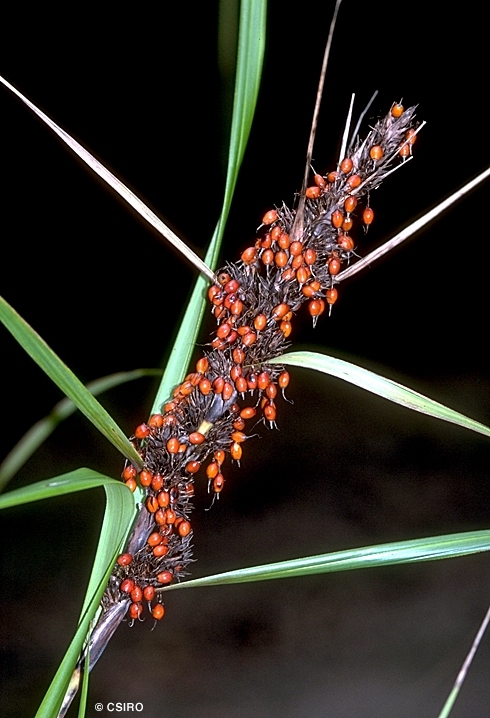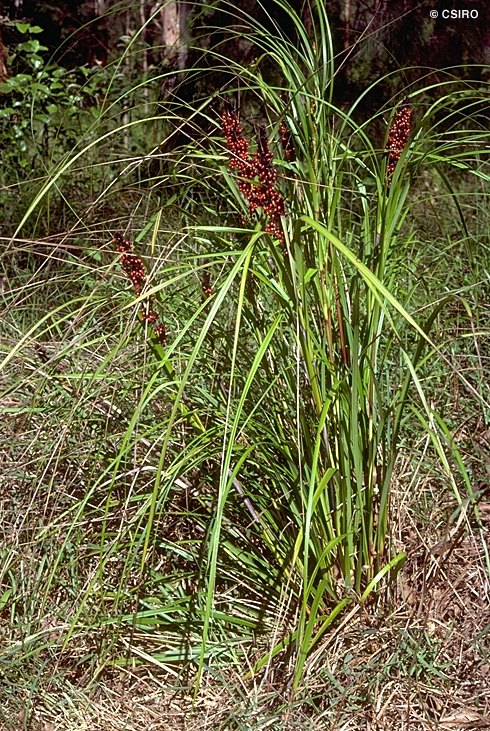Australian Tropical Rainforest Plants - Online edition
Gahnia aspera (R.Br.) Spreng.
Sprengel, C.P.J. (1825) Systema Vegetabilium 2 : 114.
Red-fruited Saw-sedge; Saw Sedge; Red-fruit Saw-sedge; Large-seeded Gahnia; Gahnia, Large-seeded; Gahnia; Sword Grass
Essentially herbaceous with an underground rhizome but leaves sometimes exceeding 1 m in height.
Leaf blades long and narrow, up to 100 x 0.5-0.7 cm, margins very finely toothed (visible with a lens) so that the leaves can cut the hands of careless or over enthusiastic collectors and children. Leaves without a midrib.
Inflorescence spike-like, about 10-25 cm long on a much longer peduncle. Each flower enveloped in about 7-10 dark brown bracts. Stamens about 4-6, filaments eventually about 10-13 mm long, anthers about 1.5-4 x 0.4 mm. Style 3-branched.
Fruits shiny reddish brown, about 4-5 x 3 mm, very hard and cannot be crushed between the teeth. At maturity, fruits pendulous, hanging from the infructescence by a fine thread. Embryo small, located near the base of the seed most of which consists of endosperm.
Occurs in CYP, NEQ, CEQ and southwards as far as south-eastern New South Wales. Altitudinal range from near sea level to 1100 m. Sometimes grows in open forest but usually found in wet sclerophyll forest or disturbed areas in well developed rain forest. Also occurs in Malesia and the Pacific islands.
Food plant for the larval stages of several species of Skipper Butterflies. Common & Waterhouse (1981).
An upright climbing plant with some potential in horticulture and produced red fruits.








